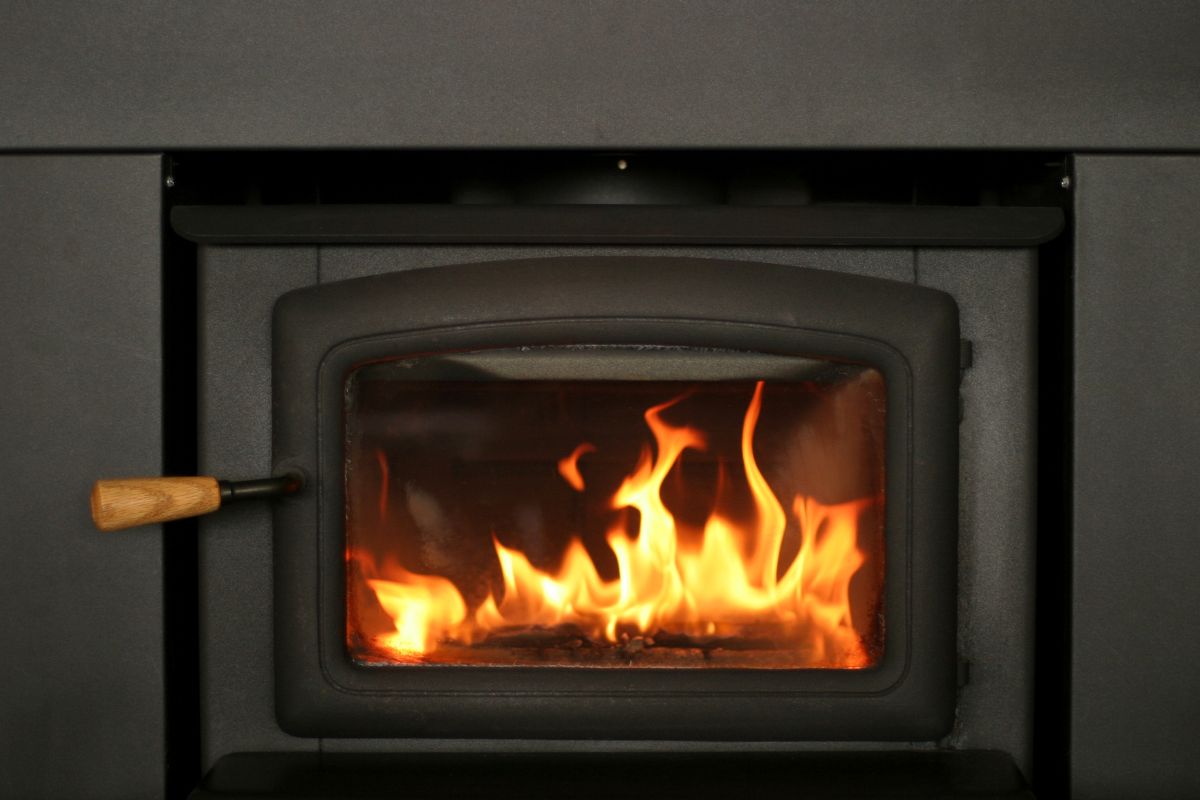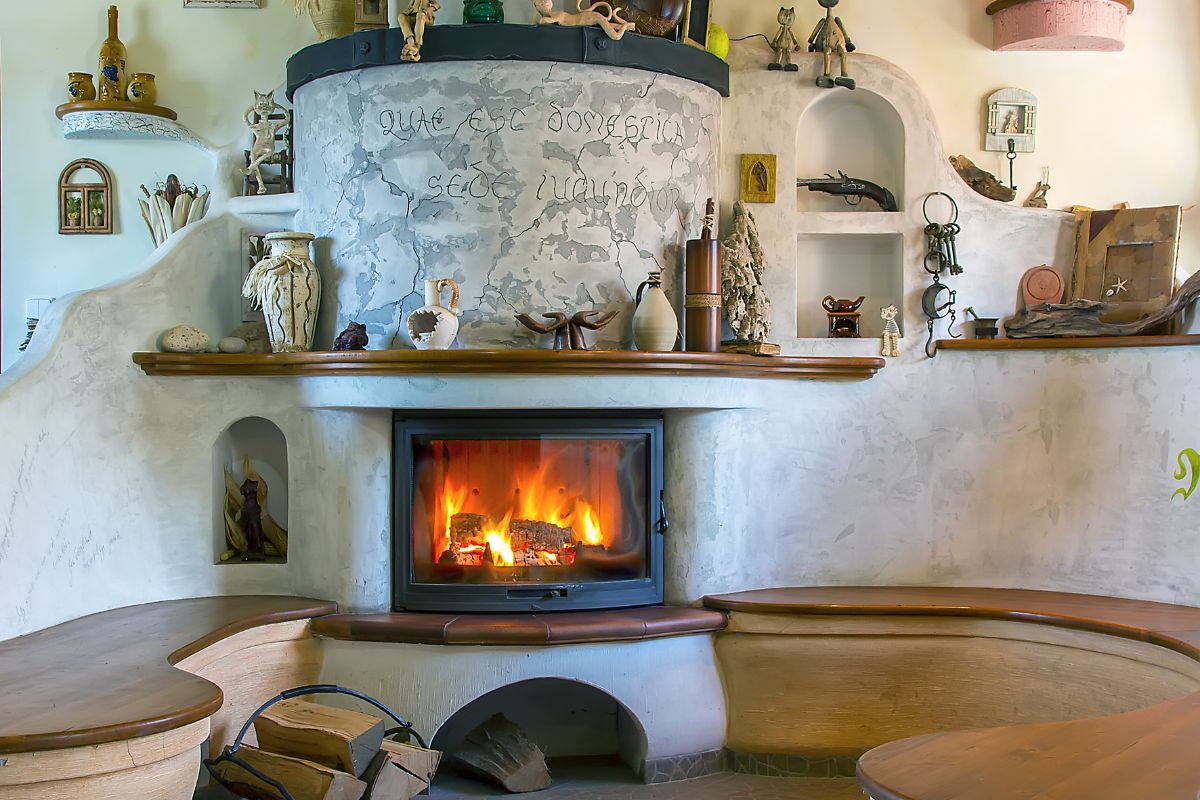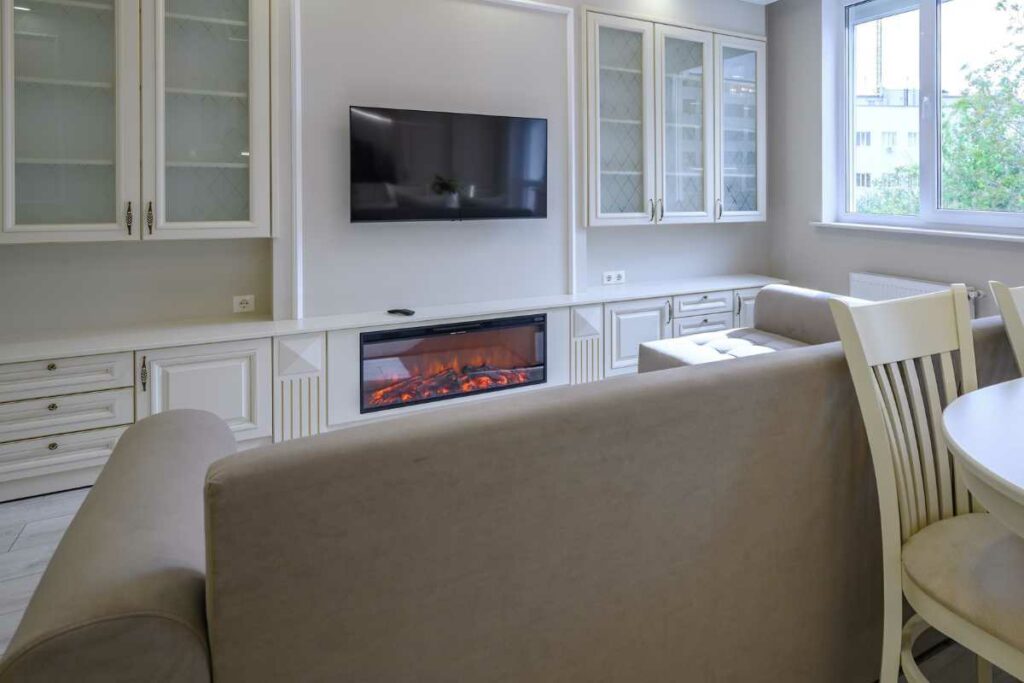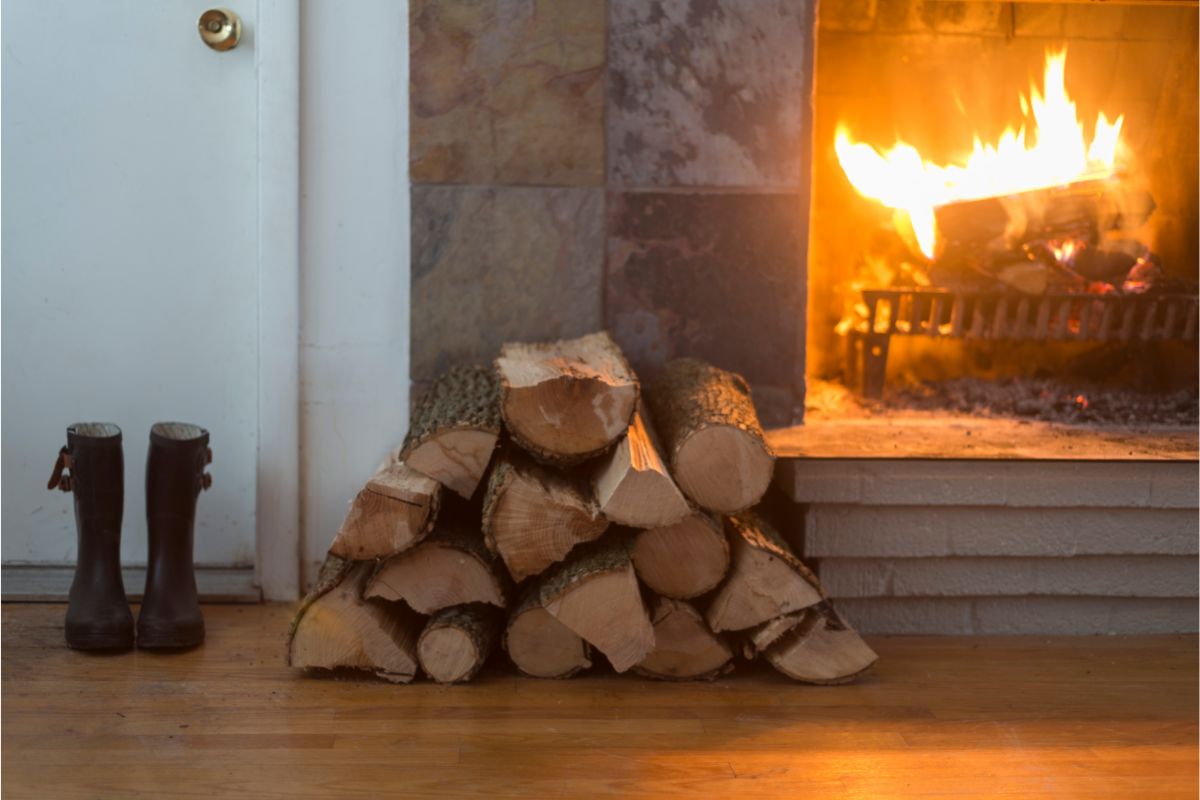Aesthetically speaking, a fireplace is a fantastic feature. It gives the room an air of sophistication, welcome, and warmth, but in terms of actual heat, they’re often not too efficient.

It doesn’t matter if they’re factory built or a classic masonry structures, most of the heat produced by combustion will inevitably escape through the chimney and out of the house, leaving you with cozy vibes, but not-so-cozy temperatures — boo!
A fireplace insert, however, can save the gloomy day by boosting the warmth of the room, but what exactly are they, and how do they pull it off? Let’s find out!
Defining Fireplace Inserts
Fireplace inserts are essentially little, legless, fireproof boxes surrounded by thick sheets of cast iron or steel.
An insulating, heat-proof door completes the design, creating a completely sealed combustion chamber.
Alongside the box itself, a fitter will install a stainless steel chimney liner that stretches all the way to the vent on the roof of the building, ensuring that all particulate matter has a clear escape route to the outside world.
What Do Fireplace Inserts Do?
Fireplace inserts serve three purposes. Primarily, they’re a way of making fireplaces more energy efficient.
Secondly, they’re often used to modernize existing fireplaces and beautify the greater aesthetic of the room. And finally, they can alter the fuel type of a fireplace.
What’s The Difference Between A Fireplace & A Fireplace Insert
Oftentimes, the terms fireplace and fireplace insert are used interchangeably, but they’re actually totally different things that do the same job.
A fireplace is what you likely already have in your house.
It will be composed of an open firebox, a grate (or burners if it’s a gas installation), a lintel that runs over the top of the firebox, and an adjoined chimney network for venting combustibles.
A fireplace insert, on the other hand, is a sealed unit that is inserted inside the firebox of an existing fireplace, hence the name.
However, an insert typically won’t fill out the entire cavity of the original firebox, so robust decorative elements are installed around it, providing a sleek and seamless finish.
How Do Fireplace Inserts Increase Energy Efficiency?

One of the ways in which inserts are more effective heaters than fireplaces is their ability to retain heat.
You can think of them as heat safes — the heat is locked in their pretty tight.
It can’t mosey on up out the chimney right away as it does in a fireplace.
But this sealed box doesn’t just keep heat in; it also keeps drafts out, thereby stabilizing the temperature in the room, keeping it warmer for longer.
Then there’s the burn quality to account for.
A sealed box offers preferable conditions for efficient combustion, meaning fuel in an insert will burn slower, optimizing heat radiation all the while reducing harmful emissions — it’s a win-win!
If you’re a numbers person and you’re interested in knowing just how much more energy efficient an insert is than a standard fireplace in order to assess if it will be worth the cost, here are the key stats:
- Fireplace efficiency — Between 5 and 10%
- Fireplace with fireplace insert efficiency — Between 70 and 75%
- Total gains from installing fireplace insert — Between 60 and 70% increase in energy efficiency.
As you can see, fireplace inserts are almost always worth the cost! But what kind of fireplace inserts are there?
Fireplace Insert Options
You’re spoiled for choice when it comes to deciding on a fireplace insert.
Not only are there countless different sizes and styles out there, but you can select your ideal fuel type too — there are electric inserts; gas and propane inserts; inserts you can power by wood, coal, or pellets… essentially, whatever you need, you can get.
Electric Fireplace Inserts
If you’re looking for a fuss-free fireplace, then an electric insert is a no-brainer!
They don’t require any permits and they’re easy to install as they don’t need a venting system (see also ‘What Is A Direct Vent Fireplace?‘) and most clearance guidelines can be ignored.
As such, many choose to save a few bucks and take the DIY installation route.
To maintain the quaint charm of a traditional fireplace, electric inserts are fitted with flickering lights to create the illusion of real flames.
They save you the hassle of purchasing, chopping, storing, and maintaining a traditional fuel, but the downside is that they typically only arrive with small heaters, and as they’re not burning any fuel, you’ll likely only get about 5000 BTUs from them.

Gas/Propane Fireplace Inserts
For homeowners with access to a gas line, a gas insert may be the best option, although, unlike an electric unit, you’ll have to call in a professional to fit it.
Gas inserts are extremely efficient, sometimes exceeding the average we discussed earlier by nearly 10%.
What’s more, with an output between 25,000 and 40,000 BTUs, they are capable of heating a mid-size room without breaking a sweat.
They’re also relatively low-maintenance units — As gas burns so clean, the chimney doesn’t need sweeping.
All you’ll have to do is give the glass door a wipe from time to time.
You will need to factor in a couple of aftermarket purchases into your budget, though, as a carbon monoxide detector is a crucial safety installation, and you may want to fit the insert with some fake logs.

Wood (& Other Fuels) Fireplace Inserts
If you love the look of your normal fireplace, but you’re not so enamored by the lack of efficiency, then a straight switch to a traditional fuel fireplace insert is the perfect move for you.
Plateauing around the 50% mark, they’re not as efficient as gas inserts, and traditional fuels don’t burn as clean, but they do burn hotter!
You can expect a relatively small wood insert to max out at around 65,000 BTUs, and with a full load, they can keep the fire going for up to 8 hours.
Final Thoughts
If you’re looking to save a few bucks on your energy bill, your fire fuel budget, or you’re just something of an eco-warrior, a fireplace insert will definitely be worth your while.
They allow you to visually remodel your existing fireplace, increase energy efficiency by an average of 700%, and keep your room, and thus, your toes, nice and toasty!
FAQ
What is the difference between a fireplace and a fireplace insert?
Fireplace inserts are smaller than an open fireplace, they are designed to fit inside a smaller space.
Fireplace inserts are self-contained units with a glass door/window to allow you to view the flames. The area of the window is usually much smaller than the area occupied by a traditional open fireplace.
The primary benefit of a fireplace insert is heat efficiency, modern designs and an easier clean up.
- Discover the Ease and Elegance of Zero-Clearance Fireplaces - July 24, 2023
- How to Build a Frame for an Electric Fireplace Insert: A Step-by-Step Guide - July 16, 2023
- Bedroom Fireplace Ideas That Will Make You Want to Snuggle Up - July 16, 2023








